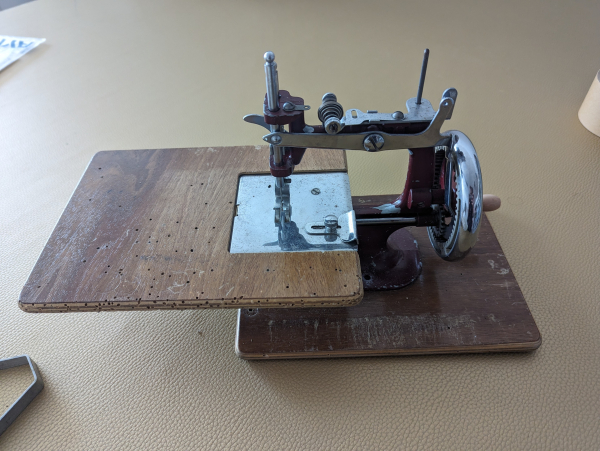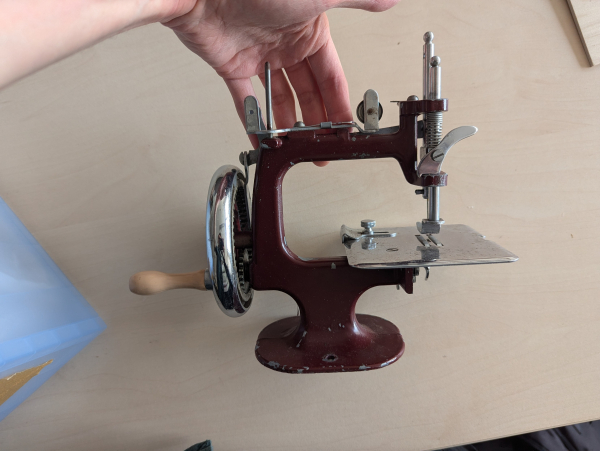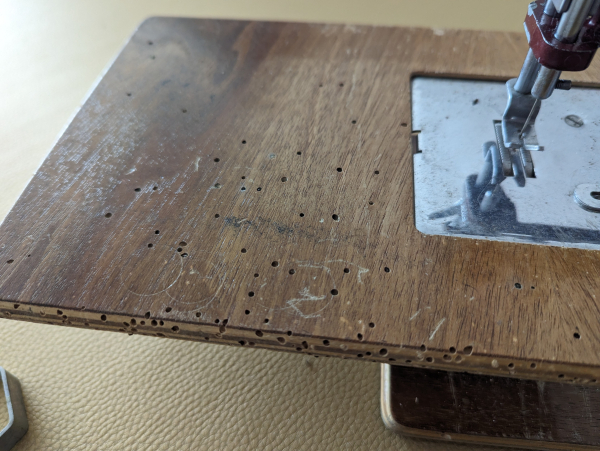I got this ~1950s mini sewing machine when someone was giving it away locally, so I've started restoring it. This is before...
There was live woodworm eating into the wood panels, the paint was flaking off, and there were rust spots on the exposed metal. The mechanism was actually in decent working order though.
#sewing #restoration #repair #vintage
There was live woodworm eating into the wood panels, the paint was flaking off, and there were rust spots on the exposed metal. The mechanism was actually in decent working order though.
#sewing #restoration #repair #vintage




Averixus •
For the table, I laser-cut layers of 2mm plywood in slightly different sizes to create the right profile in the sides of the slot. Here it is before and after sanding the edges to nice curves.
Averixus •
The hardest part was removing the hand-crank wheel. It was really tightly wedged and I ended up having to hammer the metal in the centre of the wheel to release it. 😬
But it all came apart with no damage eventually.
Averixus •
Next will be cleaning all the other parts of rust, and then repainting. I won't be able to exactly match the old colour so I'm thinking I might do something totally different, but I haven't decided yet.
Averixus •
Averixus •
Averixus •
I've spent a week on spraying, sanding, and what felt like endless waiting in between layers.
Averixus •
Now I just need to wait another week or so for the paint to finish curing fully, and then it will be time to find out if I can reassemble it...
Averixus •
It's not perfect, but this was the first time I've ever done work like this and I'm really pleased with it.
@sewing
#sewing #restoration #repair #vintage #darkTimeToots
Jenny Andrew hat dies geteilt
Hugs4friends ♾🇺🇦 🇵🇸😷 •